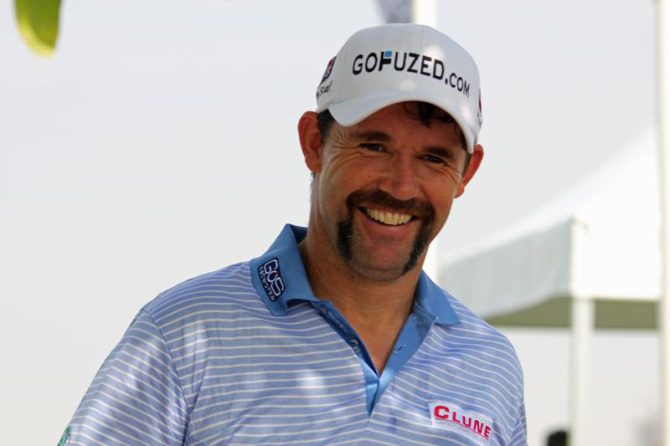Sam Snead: A Legacy of Golfing Excellence
Sam Snead stands as a paragon of golfing excellence, his career marked by an extraordinary blend of technical skill and psychological resilience. This article delves into the intricacies of Snead’s approach to golf, highlighting the techniques and strategies that solidified his legendary status in the sport.
!Sam Snead: A Comprehensive Analysis of His Golfing Techniques
The Artistry Behind Snead’s Swing
Biomechanical Efficiency
Snead’s swing was a marvel of biomechanical efficiency. He employed a neutral grip, with his left hand slightly lower than his right, facilitating a natural wrist hinge. His athletic stance featured feet shoulder-width apart and balanced weight distribution. Throughout his swing, he maintained head stability to minimize lateral movement.
His backswing flowed smoothly along a shallow arc, allowing for impressive clubhead speed without compromising accuracy. The downswing showcased full hip rotation that generated centrifugal force, further enhancing speed.
The follow-through was equally noteworthy; it was both graceful and extended, ensuring maximum momentum transfer while maintaining balance—a testament to his control over the club throughout the motion.
Strategic Course Management: Snead’s Tactical Approach
Beyond technical prowess, Sam Snead excelled in course management—an essential element contributing to his success on the links. His multifaceted strategy included:
- Thorough Course Analysis: He meticulously examined each hole for wind conditions and hazards to craft tailored game plans.
- Smart Club Selection: By assessing distance and obstacles between him and the hole while factoring in environmental conditions, he optimized shot placement.
- Playing Within Limits: Recognizing personal strengths allowed him to avoid unnecessary risks; this conservative mindset minimized costly errors during play.
Example Game Plans
| Hole Number | Par | Hazards | Strategy |
|————-|—–|———|———-|
| 1 | 4 | Dogleg right with water left | Drive left side fairway; lay up short before dogleg; chip onto green |
| 9 | 5 | Narrow fairway with creek ahead | Drive down left side; lay up before creek; wedge onto green |
| 18 | 4 | Short par with bunkers guarding green | Center fairway drive; short iron approach; aim for birdie |
Mastery in Competitive Play: Psychological Resilience
Snead’s competitive edge stemmed from rigorous mental conditioning developed through years on tour. Key aspects included:
Focused Concentration
He cultivated an exceptional ability to concentrate during rounds while effectively managing distractions through positive self-talk.
Tactical Acumen
By studying opponents’ styles and course layouts extensively, he crafted detailed shot plans that accounted for various playing conditions—showcasing remarkable adaptability under pressure.
Notable Tournament Wins
| Tournament | Years Won |
|———————-|—————————|
| Masters Tournament | 1934, 1942, 1949–1954 |
| U.S. Open | 1946 |
| PGA Championship | 1942–1951 |
| Open Championship | 1938 |
Lasting Influence on Golf Instruction
Sam Snead’s holistic approach not only shaped his own game but also influenced generations of golfers through teaching methods emphasizing preparation across all facets—technical skills alongside mental fortitude.
He advocated breaking down golf into its core components while stressing visualization techniques that enhanced understanding among students about mechanics involved in their swings.
Moreover, recognizing external factors affecting performance led him to promote overall well-being—including physical fitness and emotional health—as vital elements for success both on-course and off.
Insights for Aspiring Golfers
Budding golfers can draw invaluable lessons from Sam Snead’s philosophy by embracing comprehensive preparation strategies:
Master Green Reading
- Visualization Techniques: Envision greens’ topography pre-shot.
- Study Green Maps: Analyze contours thoroughly.
- Seek Mentorship: Learn from seasoned players or instructors about subtle variations in greens’ behavior.
Precision Shot-Shaping
- Control Trajectory: Experiment with different stances for desired ball flight.
- Spin Manipulation Skills: Understand how swing dynamics affect spin types.
Holistic Course Management
- Evaluate Conditions Carefully: Stay informed about weather impacts on playability.
- Strategic Planning: Weigh pros/cons when selecting shots based on potential hazards encountered during play.
By adopting these principles rooted in dedication akin to Sam Snead’s legacy—golfers can enhance their performance significantly while enjoying deeper engagement within this timeless sport.
Sam Snead’s unparalleled expertise has etched an indelible mark upon golf history—a legacy characterized by mastery over technique coupled with strategic brilliance that continues inspiring players today as they navigate their own journeys within this beloved game.

Unlocking the Secrets of Sam Snead: Mastering the Art of Golfing Excellence
Meta Title: Unlocking Sam Snead’s Secrets to Golfing Success
Meta Description: Discover the strategies and techniques that made Sam Snead a golfing legend. Learn to enhance your performance with insights from one of golf’s greatest.
The Legacy of Sam Snead
Sam Snead, often regarded as one of the greatest golfers of all time, left a lasting impact on the game with his unique skills and influential techniques. His smooth swing, remarkable putting ability, and strategic course management contributed to his legendary status. This article explores the secrets behind Snead’s success, providing golfers with techniques to improve their own game.
Key Techniques of Sam Snead
1. The Effortless Swing
- Smoothness Over Force: Snead’s golf swing is renowned for its fluidity. He emphasized the importance of a relaxed grip and a natural swing motion, which allows for better control and consistency.
- Practice Drills:
– Slow Motion Swings: Practice swinging slowly to develop a smooth transition.
– Weighted Club Exercises: Using a heavier club can help build strength and reinforce a natural swing motion.
2. Mastering the Short Game
- Chipping and Pitching Skills: Snead believed that a strong short game can significantly lower scores. He practiced various lies to enhance his adaptability.
- Exercises to Improve Short Game:
– Target Practice: Set up targets for your chipping and pitching to improve accuracy.
– Varied Lies: Practice chipping from different surfaces, such as rough and tight lies, to increase versatility.
3. Putting Precision
- Reading Greens: Snead had an uncanny ability to read greens and understand the subtle breaks. He often visualized the path the ball would take before addressing the putt.
- Putting Drills:
- Alignment Aids: Use alignment tools to ensure proper setup.
– Distance Control: Practice putting from various distances to improve feel.
Psychological Edge: Snead’s Mental Game
1. Visualization Techniques
Sam Snead employed visualization to prepare mentally before each shot. He would picture the shot’s trajectory and landing, enhancing focus and confidence.
2. Staying Positive
Maintaining a positive attitude was essential for Snead. He believed in the power of positivity to influence performance.
- Techniques to Foster Positivity:
– Affirmations: Use positive affirmations daily to boost confidence.
– Mindfulness Practices: Engage in mindfulness sessions to improve focus and calmness on the course.
Course Management Wisdom
1. Strategic Decision Making
Snead’s strategic approach to course management allowed him to make informed decisions, balancing risk and reward.
- Key Principles:
– Know Your Game: Understand your strengths and weaknesses to make better strategic choices.
– Play Smart: Choose riskier shots wisely; sometimes, playing conservatively leads to lower scores.
2. Utilizing the Terrain
Understanding the course terrain was crucial for Snead. He would analyze slopes and wind conditions to optimize his shots.
- Practical Tips:
– Study Course Maps: Familiarize yourself with the course layout before playing to identify key areas.
– Observe Wind Patterns: Pay attention to prevailing wind directions and adjust your shots accordingly.
Case Studies: The Influence of Snead’s Techniques
Successful Players Inspired by Snead
Many modern golfers have adopted Snead’s principles, leading to their success on and off the course. Here are a few notable examples:
| Golfer | Snead’s Technique Used | Result |
|——————|—————————————|———————————|
| Bobby Jones | Focused short game | Major championships winner |
| Phil Mickelson| Creative chipping and pitching skills | Multiple major titles |
| Tiger Woods | Mental visualization | Dominated the sport for decades|
First-Hand Experience: Implementing Snead’s Techniques
Personal Reflection on Learning Snead’s Style
As a golf enthusiast implementing Snead’s principles, I’ve noticed significant improvements in my game:
- Improved Swing Consistency: Focusing on the relaxed swing has led to more consistent strikes.
- Enhanced Short Game Skills: Practicing varied lies has made chipping less daunting, allowing for better performance around the greens.
Peer Experiences
- Golf Group Insights: Many friends in my golf group have found benefits in Snead’s visualization techniques. By picturing successful shots, they approach each hole with greater confidence.
The Importance of Continuous Learning
Golf is a game of endless learning. Snead exemplified adaptability, continuously evolving his game through practice and analysis.
- Embrace Education: Attend golf clinics and workshops to learn from seasoned professionals.
- Stay Updated: Follow golf literature and tutorials to keep refining techniques and strategies.
Conclusion
Mastering the art of golf, as Sam Snead demonstrated, goes beyond technical skills. By implementing a mix of technique, mental strength, and strategic play, golfers can unlock their potential and achieve excellence on the course.
By incorporating Snead’s techniques, every golfer has the opportunity to enhance their game and lower their scores, truly paying homage to one of golfing’s greatest legends.




